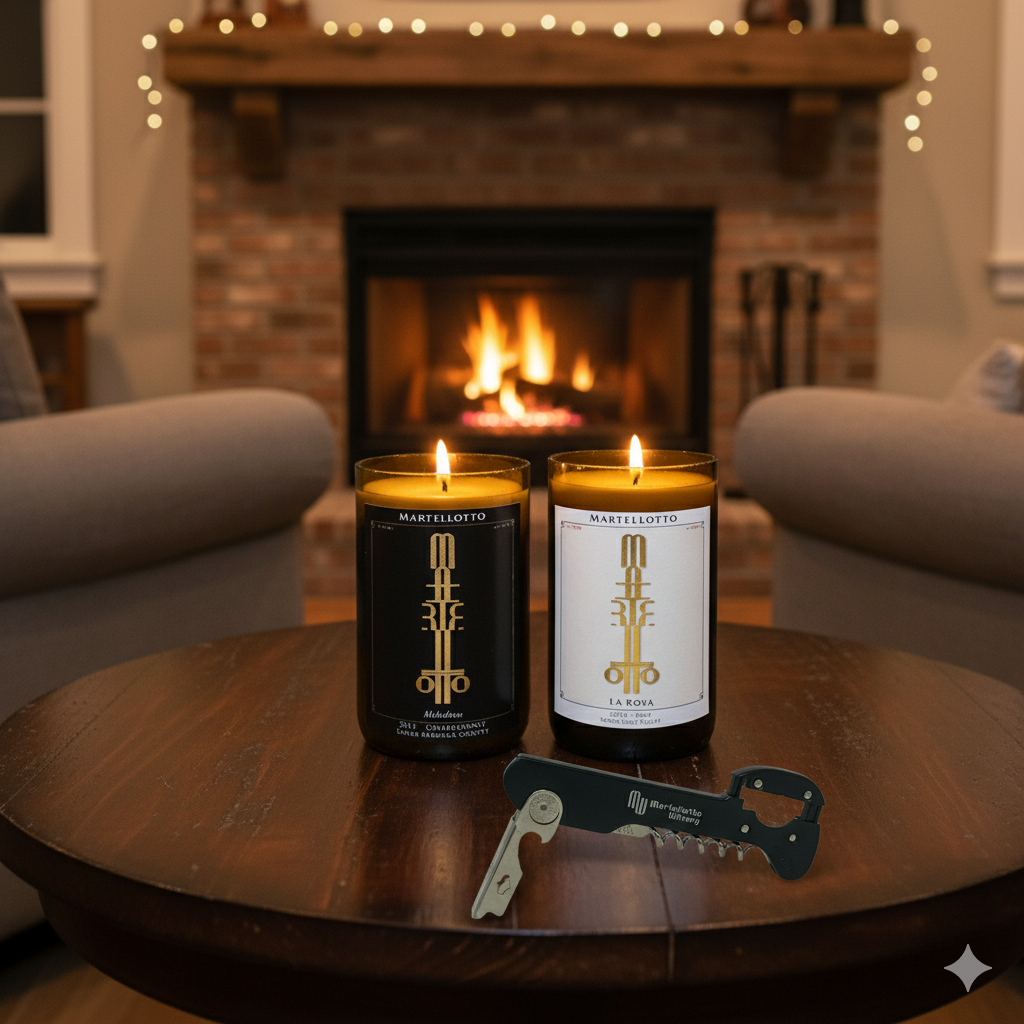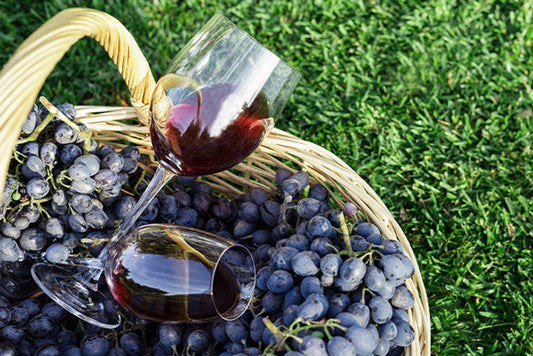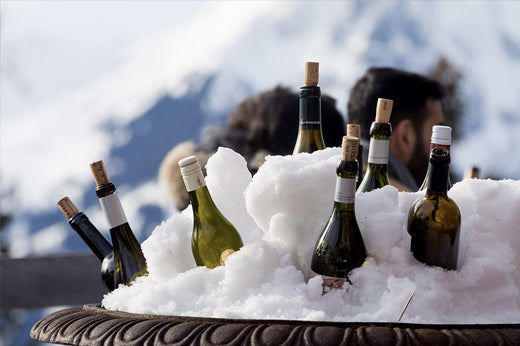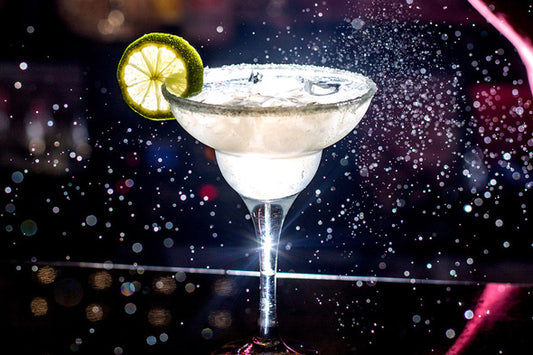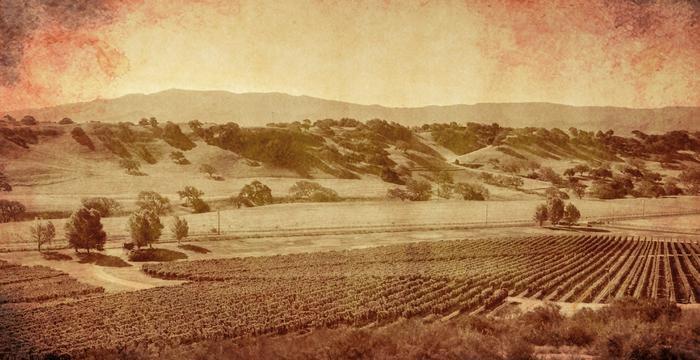
The History of Santa Barbara Wine Country, Part 2: Wine Industry Comes of Age
Santa Barbara Wine Country may be the most dynamic wine region in California today. From the Wine Ghetto in Lompoc to the newest AVA, Happy Canyon of Santa Barbara, innovation abounds throughout the County.
While the Central Coast wine region is only 50 years old, it has become invaluable to California’s economy and wine industry. After Prohibition, the wine business in California did not exist. Today, Santa Barbara Wine Country contributes $1.75B and 10,000 jobs to the state’s economy. (Alison Laslett, CEO of Santa Barbara Vintners)
This three-part series follows the path of this astonishing growth.

The Wine Industry Comes of Age
Santa Barbara Wine Country’s early pioneers planted the roots for the wine industry after Prohibition. The business grew as others came to the region to capitalize on their successes and reputations.
The industry remained focused on grape growing and selling. By 1975, there were 32 commercial wine grape growers with 3,864 acres, but only four wineries. In 1982, Santa Barbara County growers shipped 92% of their grapes to northern California.
But keeping grapes, and profits, in the County became increasingly important. Growers wanted to capture the higher profits from value-added activities, so they expanded into winemaking, though the larger growers continued to sell their output up north. By 1980, wineries grew to 13, and to 29 by 1990.
The opportunity became clear: focus on premium, hand-crafted winemaking and grape growing, plus effective marketing. The farmers wanted to control their destiny, not be shaped by wineries in the north.
Serious marketing began with the 1983 formation of the Santa Barbara County Vintners Association. The SBCVA was created by expanding the Santa Ynez Valley Viticultural Association that had been established in 1981. The idea was to follow the lead of Napa and Sonoma in successfully promoting their wines.
Winemaker Rick Longoria, the first president of the SBCVA, created the annual Vintner's Festival promoting wine and tourism in 1986. By 1999, its 100 members included wineries, wine grape growers, and vineyard managers.

Santa Barbara Wine Country Takes Shape
Consumers’ wine knowledge and habits became more sophisticated during the 70s and 80s, propelled by the media.- Wine writers Hugh Johnson and Bob Thompson wrote about the Santa Maria Valley in 1976. Sunset Magazine featured the region for the first time in 1977.
- In 1978, The New York Times recognized a Santa Barbara County winery, Firestone Winery, for the first time.
- Wine Spectator wrote about the region in 1981, and Bon Appetite featured it in 1987.
- Firestone’s wines amassed domestic and international awards throughout the 1980s.
Premium wine consumption rose from 4% of the U.S. market in 1980 to 22% in 1989.
During the 1990s, Robert Parker and the Wine Advocate promoted the region to their readers, catapulting the wines’ reputation even further.
Marketing efforts grew and the Central Coast AVA was approved in 1985. This additional AVA helped consumers distinguish wines from the central coast from those of northern California. Wine tourism as a sales outlet began to take hold in the 1980s.
By the end of the 1990s, Santa Barbara Wine Country saw an additional 8,000 acres of wine grapes planted. By 1996, wine grape growing was the most significant agricultural activity in the County. Wine production soared to over 70,000 cases of wine produced from over 50 wineries. Only 56% of grapes were sold north by this time.
At the end of the 1990s, wine producers from Napa and Sonoma, seeing the success and cheap land prices in Santa Barbara County, moved into the region. With proven wine quality, Santa Barbara County’s land appeared comparatively cheap.
But wine wasn’t a sure path to financial success. The competition forced many vineyards and wineries to close or change hands. The 1980s saw an oversupply of grapes and prices fell. Many growers plowed grapevines under.
Larger companies took advantage. Robert Mondavi and Jess Jackson purchased Tepusquet Vineyard in 1987. By 1996, large companies owned 63% of the 10,000 acres of the County’s premium wine grapes. They created wineries focused on high volumes of quality wine and tourism through tasting rooms.
The Santa Barbara County wine industry continued to evolve. Only about 40% of wine produced in the region was consumed by Californians, the rest exported outside the state.

Update on the 13 Santa Barbara Wine Country Pioneers
- Pierre Lafond of Santa Barbara Winery, making wine since 1962 in downtown Santa Barbara, created his 1972 vineyard to ensure grape supply. In 1981, he expanded production, taking advantage of the growth of tourism to Santa Barbara.
- Rancho Sisquoc remained family-owned and operated, thriving through the industry’s ups and downs. Unique to the ranch, its manager brought uncommon Sylvaner vines from Europe, planting them on the estate.
- Santa Ynez Winery went out of business, and the property became the home of Kalyra Winery.
- Los Vineros, the cooperative the Bettencourt’s founded in 1976, went out of business in 1985 due to a lack of marketing expertise.
- The partners of the famed Sanford and Benedict vineyard were in business together for less than five years. Benedict added to the vineyard when he purchased the property next door, La Rinconada, in 1997, to build a winery and tasting room there.
Sanford bought Rancho El Jabali in 1982, but lost his second winery, The Sanford Winery, due to disagreements with investors over organic farming. In 1990, Englishman Robert Atkin purchased the Benedict vineyard and hired Sanford as the vineyard manager. - During the 1980s, Zaca Mesa expanded, keeping Ken Brown as winemaker. In 1989, brothers John and Lou Cushman took control, bringing on winemaker Daniel Gehrs. In 1993, Wine Spectator named Zaca Mesa’s Syrah the #6 wine of the year, a first for a Central Coast wine. The 1993 Syrah was served at the White House in 1996 during a State Dinner for French President Jacques Chirac.
- Geoff and Alison Rusack purchased the old Ballard Canyon Winery in 1995, creating Rusack Vineyards and promoting Syrah.
- Fred Brander of Brander Vineyard became the sage of Sauvignon Blanc since his first release in 1977 garnered wide acclaim. The grape makes up most of the plantings and production. He also introduced “high-density” vineyard planting techniques.
- Leonard and Brooks Firestone launched the first modern commercial winery in the region in 1975 with capital and expertise from the Japanese company, Suntory Limited.
- Bill and Jeri Mosby bought Rancho de la Vega in 1976 and created Mosby Winery and Vineyard in 1979 with their three sons. They championed Italian varietals. Son Gary started his label, Chimere, in 1989.
- After buying Houtz Vineyard, Beckmen Vineyards made wines from its two vineyards, the Thomas and Judith Beckmen Estate Vineyard in Los Olivos and the Purisima Mountain Vineyard in Ballard Canyon.
- Ken Brown founded Byron Winery in 1984, staying on after its acquisition by The Robert Mondavi Winery, which began acquiring thousands of acres of County vineyards. Brown remained winemaker for 20 years.
- In 1985, Dan Gainey, the son of Daniel and Robin Gainey, joined the business, buying land in the Sta. Rita Hills in 1996. The vineyard, Evan’s Ranch, was named for his great-grandfather.
- Dick Doré, Foxen’s great-great-grandson, and winemaker Bill Wathen (former Chalone viticulturist) established Foxen Vineyards & Winery in 1985 on the historic ranch. They made wine from purchased grapes and planted vines with proceeds beginning in 1991.

Success Catalyzes More Wine Producers
The trailblazing Zaca Mesa Winery produced more than its fair share of winemaking stars. A few of Zaca Mesa’s alumni artisan winemakers include:- Jim Clendenen, the second winemaker at Zaca Mesa, started Au Bon Climat with Adam Tolmach in 1982. Jim made the Au Bon Climat wines in the French Burgundy style.
- Adam Tolmach met Jim while working at Zaca Mesa. Jim bought his interest in Au Bon Climat in 1991 and Adam then created The Ojai Vineyard.
- Lane Tanner founded Lane Tanner Wines in 1989, the County’s first female owner and winemaker. She started at Firestone in 1981, then made wine at Zaca Mesa, and for the Hitching Post until 1989. She committed only to Pinot Noir and did everything herself.
- Bob Lindquist of Qupé Wine Cellars met Jim Clendenen when they both worked at Zaca Mesa. Bob employed modern technology to enhance traditional production techniques.
- From 1974 to 1990, Daniel Gehrs made wine in the Santa Cruz mountains. He came to Zaca Mesa as head winemaker from 1993 to 1997, then consulted with Bridlewood Winery in 1998 and Lucas & Lewellen in 1999.
Tony Austin, the first winemaker at Firestone Vineyards starting in 1974, worked there for ten years. He started Austin Cellars in Los Olivos in 1981. Tony’s 1982 Sierra Madre Pinot Noir was featured during a State Dinner at the White House. He eventually sold Austin Cellars.
Rick Longoria got his start at Buena Vista Winery in Sonoma under Andre Tchelistcheff and at Chappellet Winery in Napa. He established Longoria Cellars in 1982, working part-time, while he made wine at J. Carey Cellars. In 1985, he transferred to The Gainey Vineyard, where he stayed for ten years. In 1989, his was the first winery to open in the Lompoc Wine Ghetto.
Starting in 1984, independent wine consultant John Kerr worked with many wineries including Babcock, Brander, and Houtz, where he made wine for four years. John also worked for Byron from 1986 to 1995, when he went to Carey Cellars, then owned by the Firestone family. Carey was sold in 1997 to William Foley. John continued as winemaker until 1998.
Hampton Farming Company, Inc. began in 1972 as a vineyard management and consulting company. Dale planted and managed over 12,000 acres of premium wine grape varieties over the years. He was influential in the growth of the region’s premium wine grape business.
Another early pioneer, Louis Lucas, planted the famous Tepusquet Vineyard in the Santa Maria Valley in the early 70s and opened Tepusquet Winery in 1983. As a grape grower, he sold to northern California wineries, including Beringer. Cambria Winery later bought the Tepusquet vineyard.
In 1996, Lucas partnered with Royce Lewellen, a local judge, in the Los Alamos and the Goodchild vineyards. The first release of Lucas & Lewellen Estate Vineyards was in 1999. They purchased the Valley View vineyard near Solvang in 1997.
Banker Bill Foley created Foley Estates Vineyard, on Rancho Santa Rosa, a historic racehorse ranch in the Sta. Rita Hills. He found the ranch by employing topographical maps, soil research, and climatic data. In 1995, he bought the Santa Ynez Winery (renaming it Lincourt) and the J. Carey Winery from Firestone in 1997.
When Fess Parker purchased Foxen Canyon Ranch in the mid-1980s, he intended to run cattle, plant a few acres of vineyard, and establish a small winery. He wanted to build a family business to pass on to future generations. Fess Parker Winery opened in 1991 and expanded tourism with the purchase of The Grand Hotel nearby in 1998.
Other significant wine businesses founded during this time included:
- Fess Parker neighbor Andrew Murray Vineyards focused on Rhone varietals
- Kathy Joseph moved her Fiddlehead Cellars from Napa to Santa Barbara
- Fred and Linda Rice built Sunstone Winery near Solvang
- Chris Whitcraft, Lane Tanner, and John Kerr expanded the Central Coast Wine Warehouse
- Kendall-Jackson created Cambria Winery

Santa Barbara Wine Country: Making its Way
The Santa Barbara Wine industry continued to mature due to the vision and persistence of many dedicated wine grape growers and wine producers.We’ll look at the following decades in the final installment.
